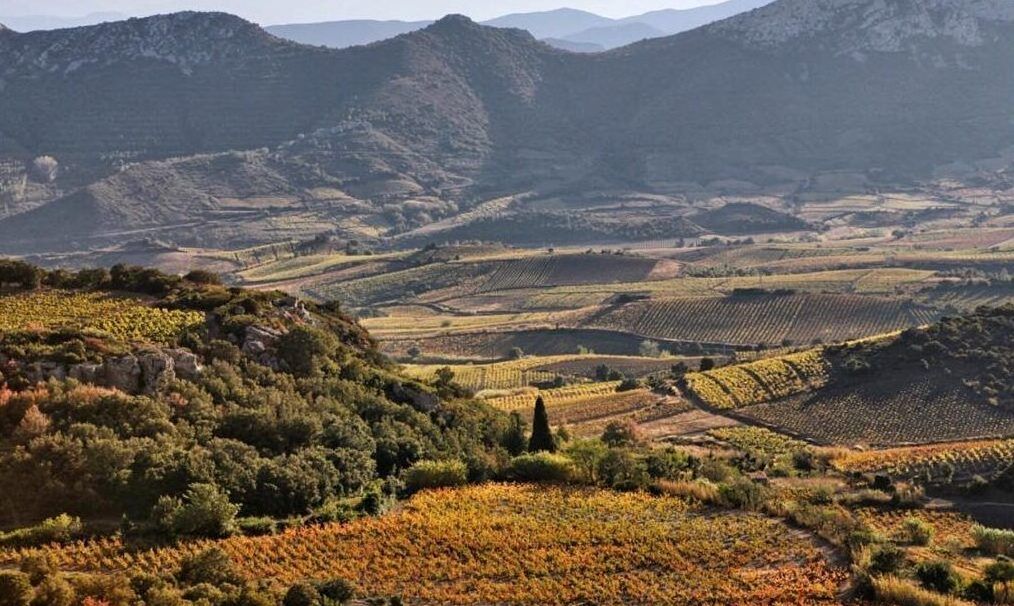“Selling vineyards in order to keep the estate at a manageable size and to bottle wines that are readily drinkable, to keep the financial balance sheet in good shape. So often these practical aspects are dismissed in estate visits, and it was refreshing to hear. Just the sort of property I would want to work with if I was buying again,” writes McCleery.
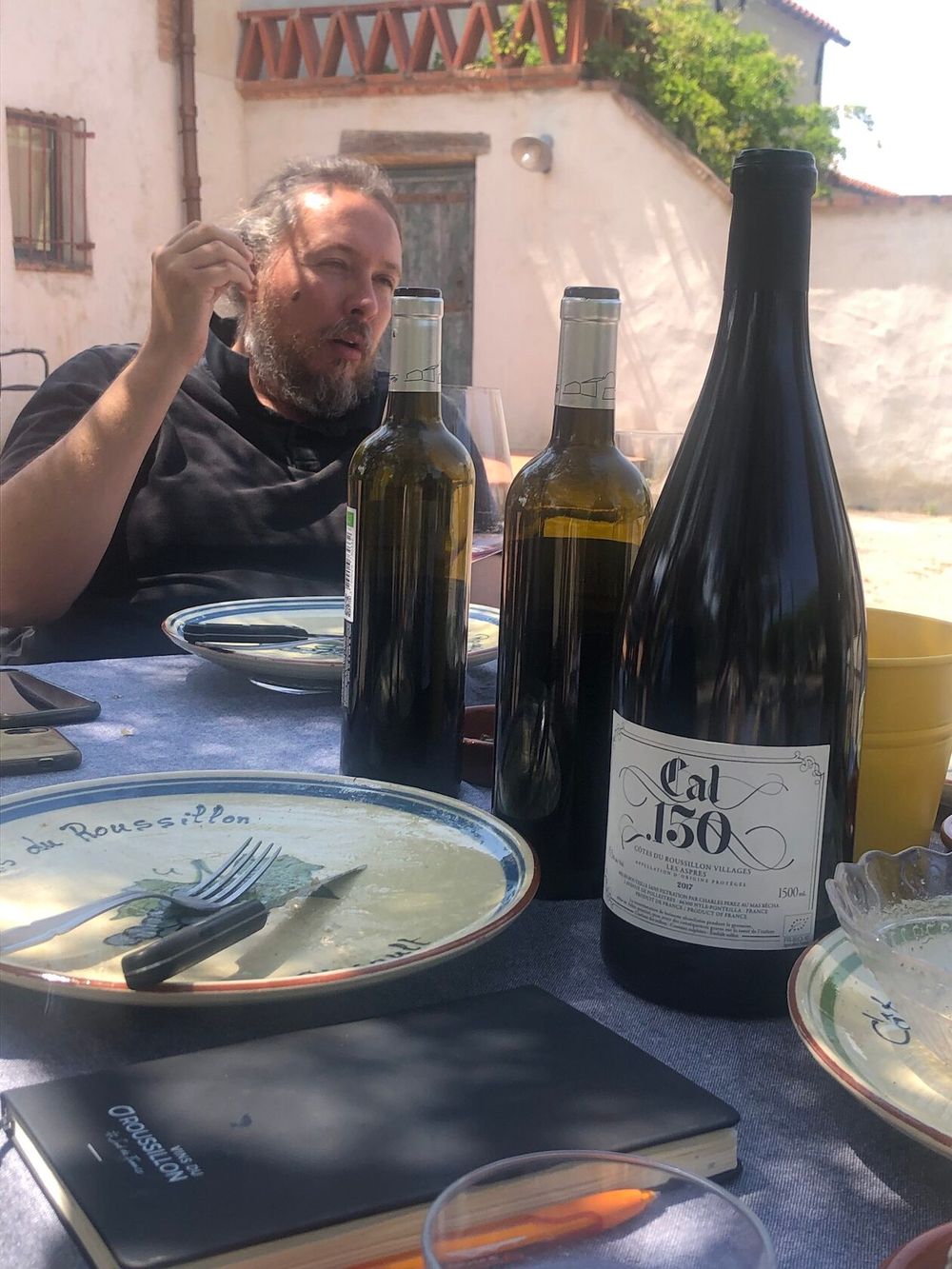
Charles Perez
Mas Becha is a 110 hectare organic estate in Nyls, south of Perpignan. Charles Perez is blessed with a one-plot, 30-hectare vineyard, planted on the chalky, arid soils of the Aspres. Alongside his vines there are almond and olive trees and crops of wheat and barley. The beauty of biodiversity is in full force here.
The winemaking is thoughtful and diligent. Cold pre-fermentation maceration, no malolactic and careful vessel selection according to the style being sought.
The wines were all faultless. Portraits de Famille is the ‘entry-level’ range and included a red, white and rosé that were all vivid, balanced and generous. Few red wines in the four-day trip delivered as much joyful, plump-fruited and fresh drinking as the Charles 2020. 60% Syrah with 20% each Grenache Noir and 20% Mourvèdre, aged in stainless steel.
Hipgnoisis 269 2020 was a breathtaking white, Vermentino-led with splashes of Macabeo and Grenache Blanc. A gorgeous, terroir-driven wine with elegant white floral notes, stone fruit and dry spice.
Tasting these wines alongside a lunch of brandade, fava bean purée, Manchego cheese, fresh vegetables and other tapas-like dishes put the wines in a modern context and showed how readily saleable they are. (Hallgarten Novum)
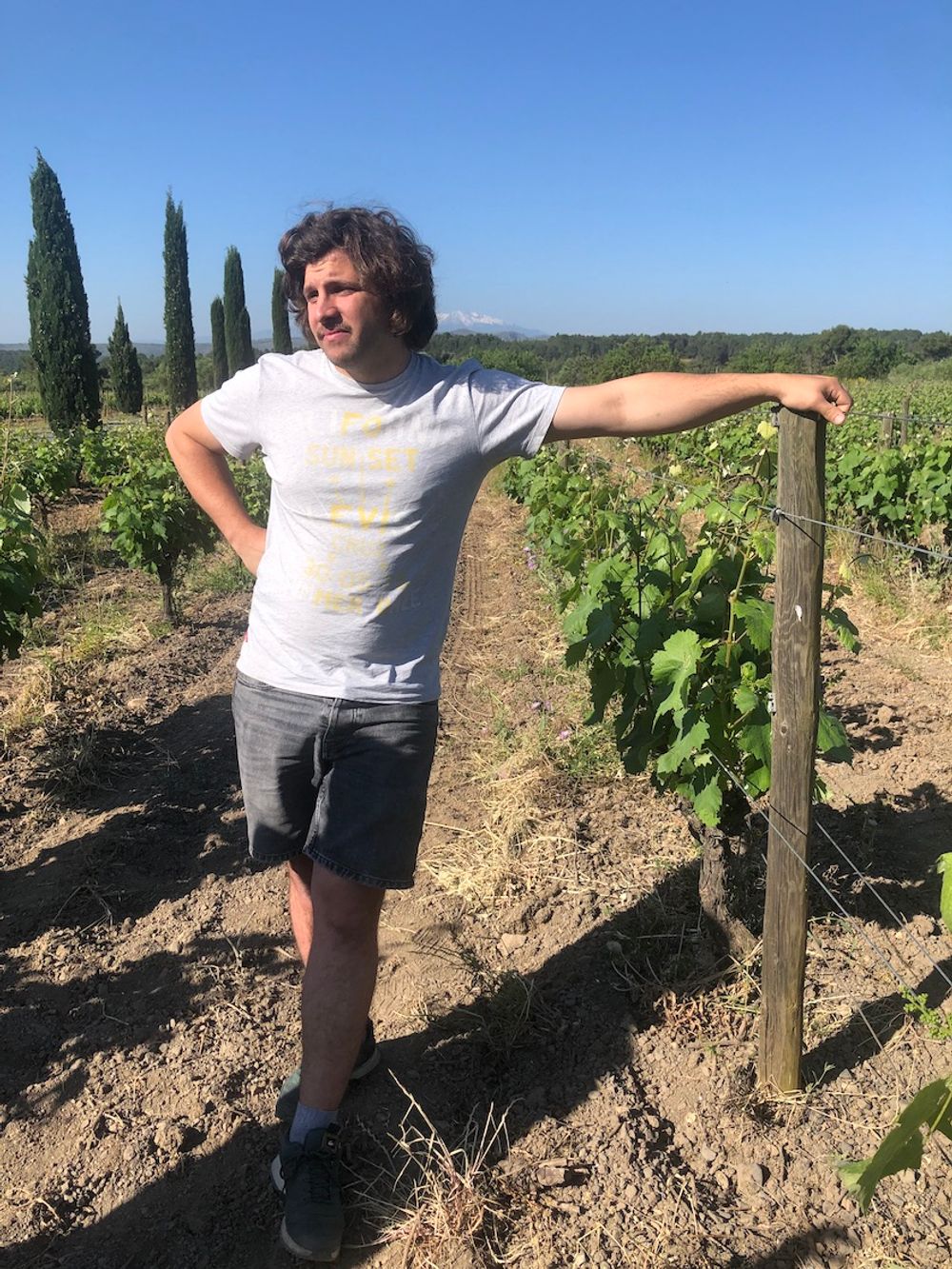
Jean Gardiés
Domaine Gardiés has its vineyards in the foothills of the Corbières mountains, where the soils are predominantly the black schists of the Espira de l’Agly with limestone too. Working biodynamically, the estate has 53 small parcels across the area.
The word that came to me, time and again, when tasting the Gardiés wines was ‘precision’. They were, I thought, a foodie and sommelier’s dream. Les Vins de Mon Père 2020 is 10% Roussanne, fermented uniquely in concrete. Ripe, red apples abundant on the nose were followed by a palate that was impressively generous in flavour with a fine backbone of acidity and a green herb, saline finish. Clos des Vignes Tautavel is a Grenache Noir/ Carignan blend, the fruit coming from vines planted in limestone soils. I loved this wine’s savoury quality, the purity of the fruit, black pepper and mushroom notes with fine-grained tannins. Just the sort of red wine I like to drink. (Jeroboams)
Domaine Brial is a cooperative working with 200 growers. They have 2000 hectares under their stewardship, of which 10% are organic. A new cellar was built in 2011. What Brial has done well is to understand that consumers are looking for wines of all styles. Their no-added sulphite wines were bright, freshly-fruited and very supple. (Seeking distribution)
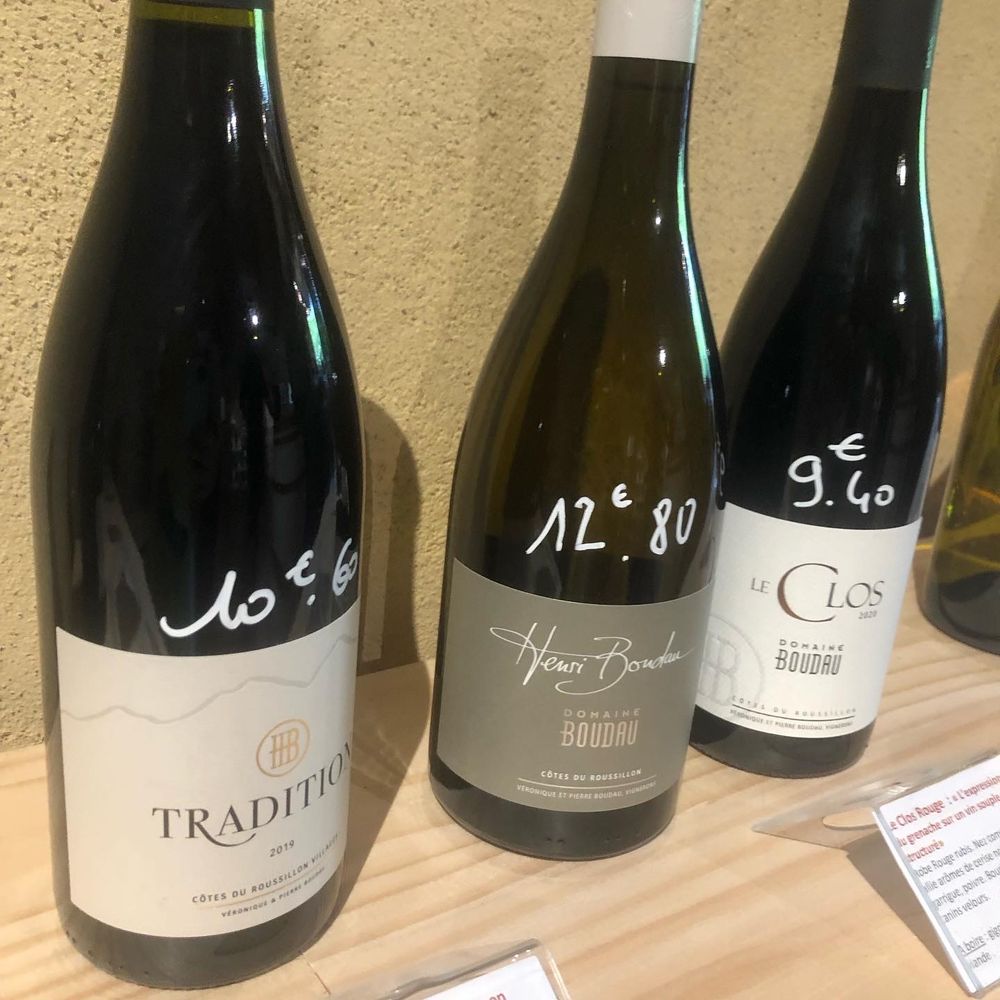
Domaine Boudau was one of those wineries I leave with a spring in my step.
The people were engaging, sensible and interesting. Located at the start of the Agly valley, the soils here are chalky clay. Its (organically certified) wine range delivered both quality drinking and good value for money. Véronique and Pierre Boudau have made sensible decisions too. Selling vineyards in order to keep the estate at a manageable size and to bottle wines that are readily drinkable, to keep the financial balance sheet in good shape. So often these practical aspects are dismissed in estate visits, and it was refreshing to hear. Just the sort of property I would want to work with if I was buying again.
Cellar door prices of €9,40 for the quality delivered in the Côtes de Roussillon range were pretty much unbeaten the whole trip. I especially enjoyed Le Clos Rouge 2020, an entirely unpretentious 80% Grenache Noir, 20% Syrah, with punchy prune and dark cherry fruit. Punchy and fresh. (St John’s take one wine, seeking distribution for the others)
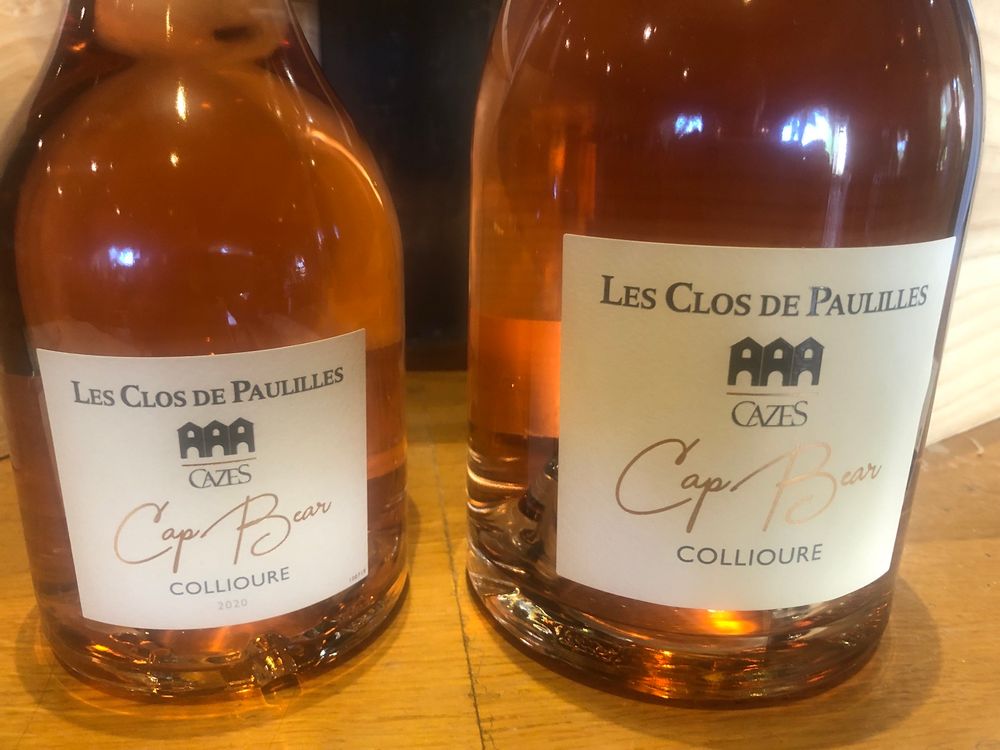
Domaine Cazes has long been on my radar. Biodynamic pioneers in the area, the company now has four separate estates, covering 220 hectares, all fully certified biodynamic. Man-at-the-helm, Lionel Lavail is an enthusiastic and clearly passionate advocate for their wines, biodynamics and the all-important Vins Doux Naturels. He’s a generous host too. I just cannot quite get a grasp on what it is to be a Cazes wine. Perhaps it is the sheer extent of the range, nearly all of which are very enjoyable.
In the end I kept getting tugged back to Lavail’s property in the Anse de Paulilles, which lies between Collioure and Banyuls. Here there are 63 hectares of vineyard planted on schistous terraces. Yields are ludicrously low here and you have to admire Lavail’s commitment to biodynamics in a place where the locals thought he wouldn’t succeed. I thought the wines from here achieved terrific complexity. Especially impressive was the red Les Clos de Paulilles 2020. Gorgeous aromas that were earthy, with dried fruit, dark chocolate and with sea air freshness. The palate was fleshy and ripe, with grainy tannins, all topped off with notes of dried spice and garrigue herbs. A step-up again was Les Clos de Paulilles Cap Béar 2020. An oak-aged blend of Mourvèdre and Syrah, this was one of the most elegant of the powerful reds I tasted on the visit, the fruits black and herbal but with a nice lift of crunchy black raspberries that gave the wine nice energy. (Enotria&Coe)
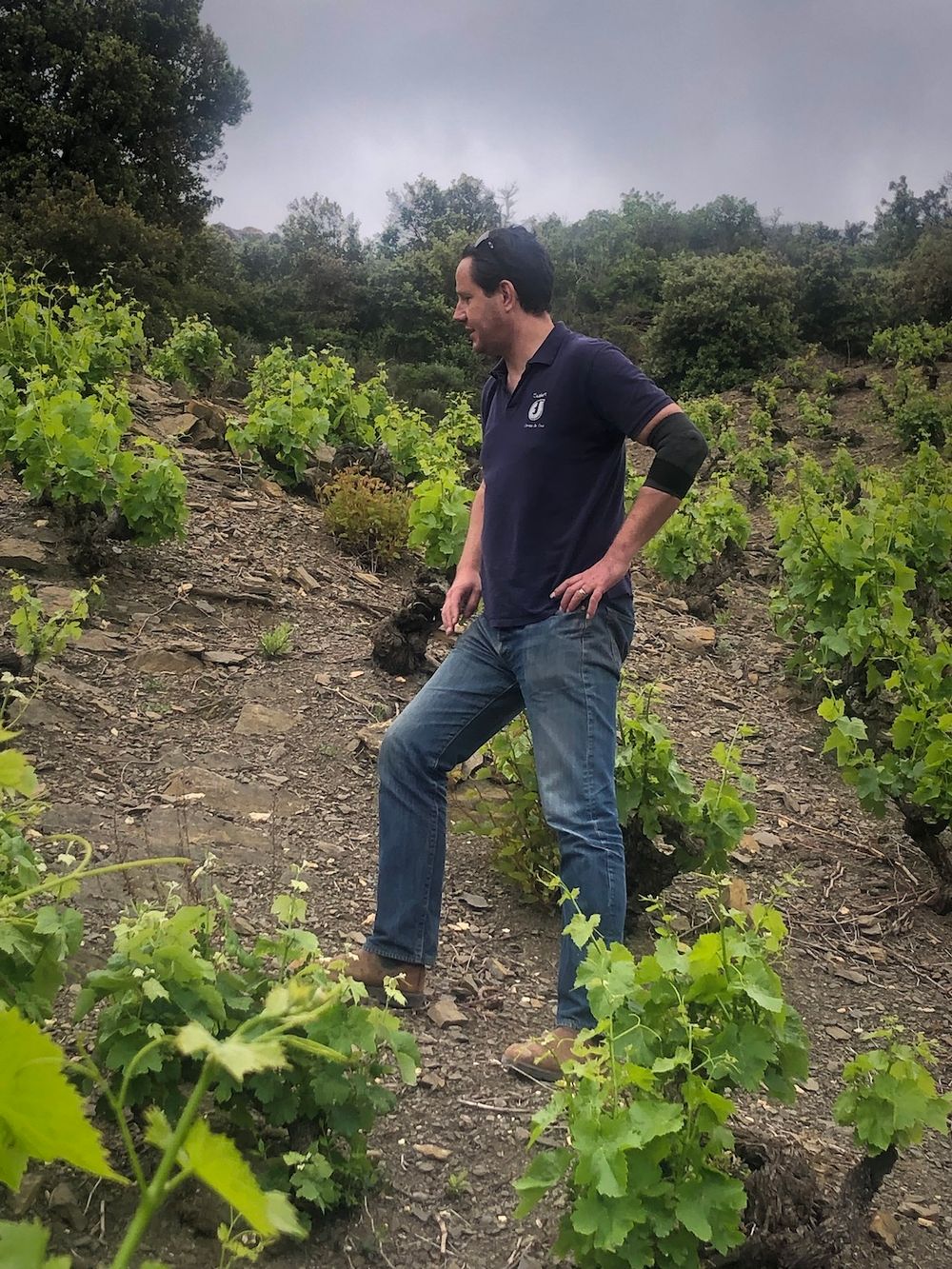
Richard Case
Domaine de la Pertuisane is owned by Englishman, Richard Case and his wife, Sarah. Theirs is a great story, having arrived in Maury via Liverpool, Plumpton College and Gisborne New Zealand. Determined to make wines, they bought three hectares of old-vine Grenache in the steep vineyards above the village. Dry-farming and hand-harvesting are the name of the game here, with vines up to 100 years old. Yields from some plots drop to as low as 10 h/l per ha!
Takeaway word from the tasting? Sarah and Richard are clearly heavily influenced by the Californian style and their partner, David Phinney (he of Orin Swift/ The Prisoner fame). I will hold my hands up and say that as much as I can appreciate the labour of love and peerless intensity of the wines, I struggle to love them. A pity because I thought Richard was terrific and he’s clearly a gifted winemaker. Perhaps surprisingly it was his Grenache Gris, The Guardian 2020 I most enjoyed. A lemon sherbet, floral and pink fruit nose was followed by a weighty palate defined by green pea and fennel fruit with raspberry and aniseed notes too. Broad and long-lived. (Seeking distribution)
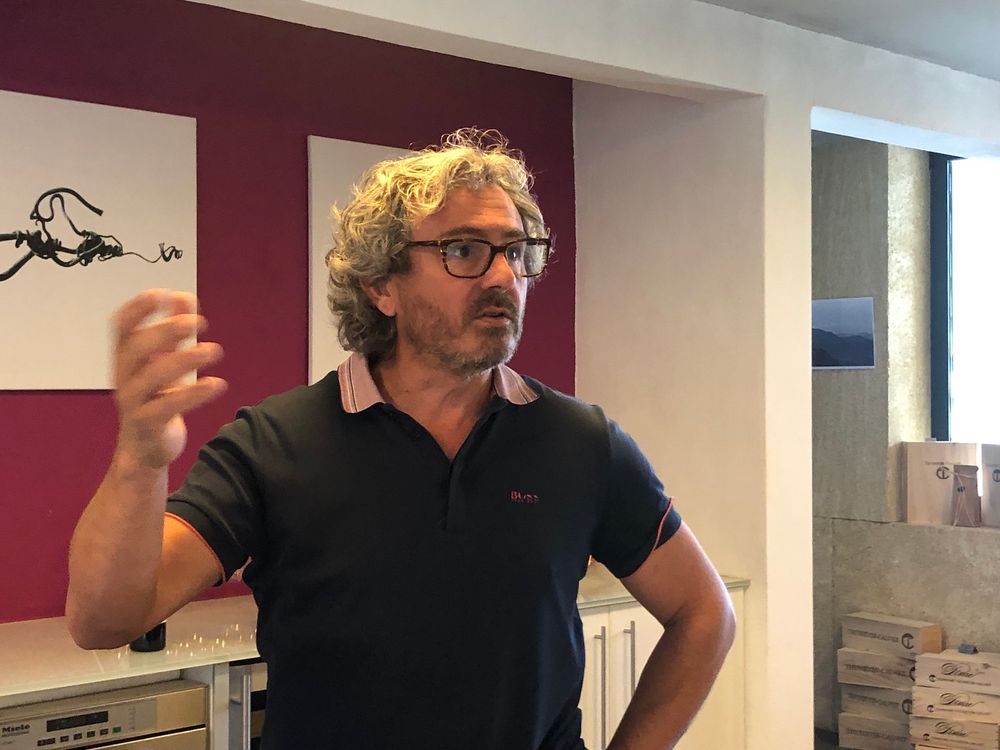
Jean-Roger Calvet
Folks say owners are like their dogs. I say, Jean-Roger Calvet at Domaine Thunevin-Calvet has made wines in his own image! Honest, characterful, intelligent and engaging. He’d said in the winery that he wanted his wines to show the impressive concentration the region is capable of but with no loss of freshness. Bingo! I have a feeling that Calvet will, very soon, make all of his wines as IGP Côtes Catalanes, where he will have more freedom with single varietals. It shouldn’t be a deterrent for interested parties. All of his vineyards are planted in the schist soils around Maury.
Lots of very good wines here, competitively priced. The 2020 L’Amourette Blanc is 100% Grenache Gris and laden with bright summer orchard fruit with a custard crème (or rather crème Catalan) feel, topped with a sprinkle of baking spice. Bright and elegant. I was similarly enthused by the red L’Amourette 2020. Terrific density of spicy black fruit but enduringly sprightly. Easy to come back to for a second helping. You can work up the range here with complete confidence that you get good value for money at every stage. (New Generation Wines)

Domaine Lafage was the first tasting of my visit to the Roussillon and Jean-Marc set a high bar for all who followed. A widely experienced oenologist and consultant his ventures run well beyond the Roussillon area but his presence here is a terrific thing for everyone.
It is always a mistake to think you’ve tasted one of the best wines you’re going to have of the whole visit, within a couple of glasses but I wasn’t wrong. Centenaire 2021 is an IGP Côtes Catalanes field blend of Grenache Gris and Blanc with Roussanne. As became common for me, the Grenache Gris and Blanc gave me a nose of fresh cut pea pod and fennel that were joined by white summer orchard fruit, lemon and green herb. The mille-feuille palate was enduringly generous and fresh. The full-bodied Léa AOP Côtes du Roussillon Villages Les Aspres is a blend of Grenache Gris, Carignan and Syrah. Liquorice-coated black fruit and fig, with supple tannins. Lovely balance. (Bibendum)
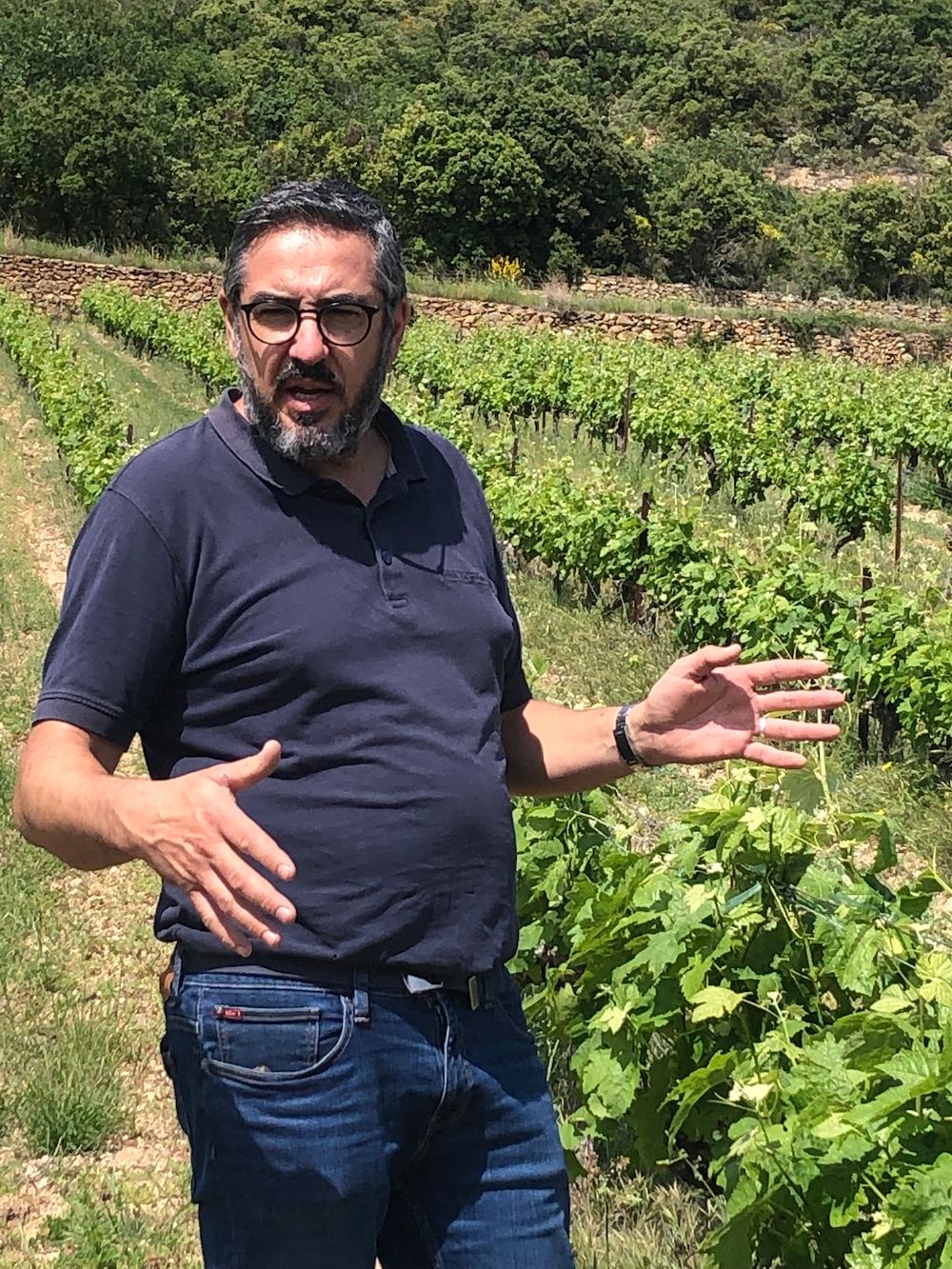
Sébastien Calduch
Négociant Jeff Carel with Sébastien Calduch bought the 18-hectare Domaine d’Ansignan when it was under threat of being ripped out. They saw considerable potential in these hilltop vineyards and the old vine Syrah, Grenache Noir that they found here. The project has taken on a ‘social’ leaning in every sense with efforts being made to support the local village with employment opportunities, as well as organic viticulture.
It all seems very good natured, and whilst the local human inhabitants are pleased to see them, there’s a less happy relationship with the wild boar community. Vintage reports aren’t solely articulated in terms of flowering, rain and sun but also the level of boar hunger and the subsequent impact on yields. There was a lot of boar fencing on view! I liked their idea of a “rosé red” – Les Grenadines 2021 – a wine you could drink fresh, after being lightly chilled.
The Aspres-based cooperative, Terrassous has 800 hectares under its stewardship. They have a smarty-presented range of white, rosé and red wines. What impressed the most was the Vins Doux Naturels being made here… at simply incredible prices. The Rivesaltes Ambré 2000 comes in at 19.5% but doesn’t taste it at all! Lovely nose of green honey, marmalade, fresh-ground coffee beans and baking spice. The palate was balanced, brimming with energy and slipped down a treat. It would set you back €16.50 if you walked in from the street. A bargain! (Jeff Carel – no UK importer yet for the Roussillon wines).
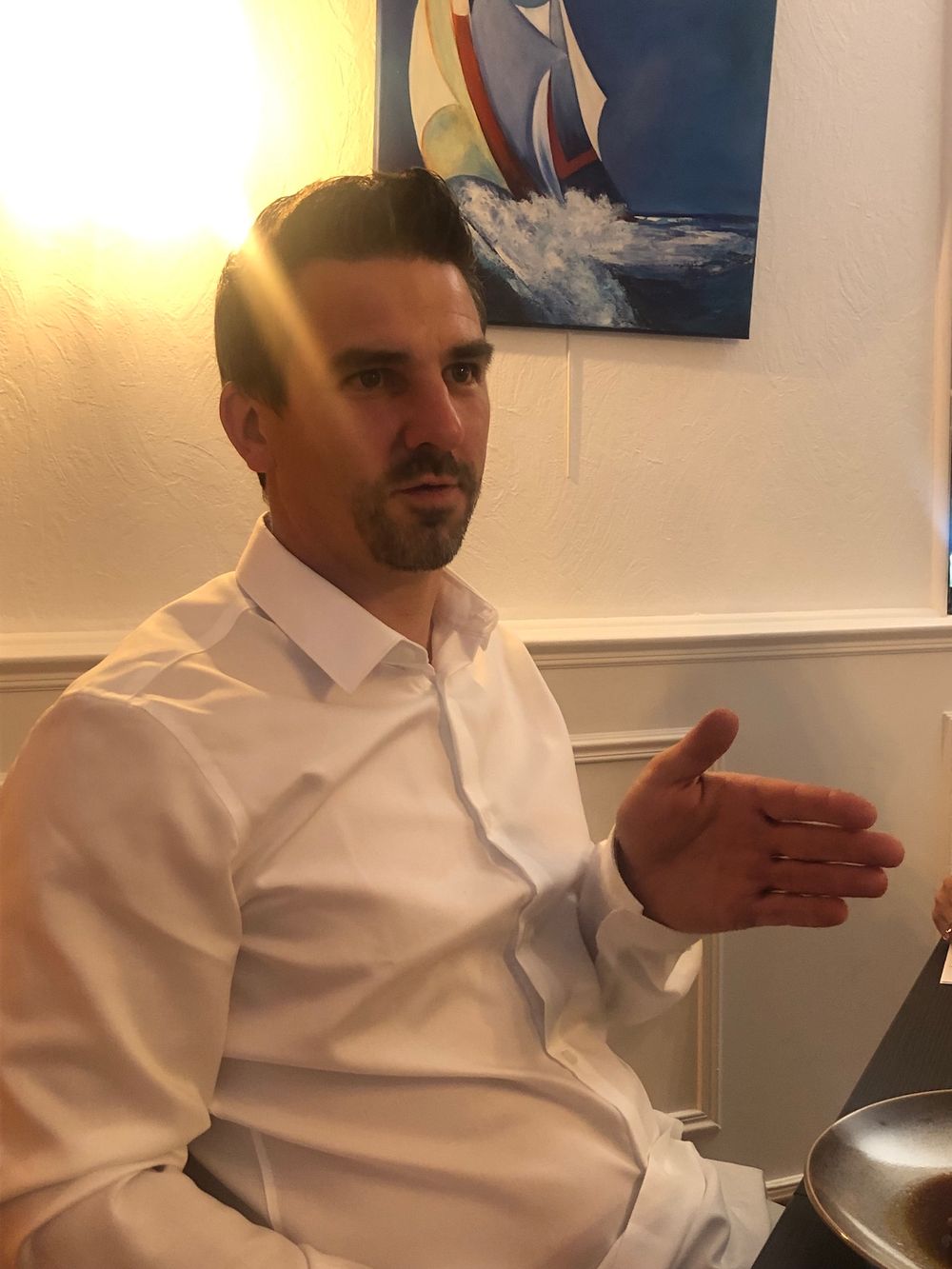
Matthieu Collet
Domaine Fontanel sums up, in many ways, all that is great and exciting about Roussillon. Owned by the very lovely Matthieu (and I assume, equally charming), Elodie Collet, who bought the property in 2017. Matthieu talks with admiral respect and openness about the support they get from Pierre Fontanel, the previous owner, who has stayed on as a consultant. This husband and wife team learnt their oenology skills at Montpellier, whilst in their 30s and everything that Matthieu says is an indication of his passion for this long-waited-for life. They are striking a fine balance between maintaining a respectful balance for the estate’s history whilst embracing modern winemaking techniques and securing much-appreciated freshness.
There’s a good deal of integrity in the man and the wines. Arrels AOP Maury Sec 2018 was the first wine I’d tasted from the AOP. 80% Grenache Noir and 20% Mourvèdre, this wine saw only stainless steel. Sappy and savoury with gingery-spice and crunchy tannins. A great food wine. AOP Côtes de Roussillon Villages Tautavel 2017 was a broodier, more muscular wine, with 80% Syrah and 20% Mourvèdre and 18% ageing in oak barrels. (Stone, Vine & Sun)
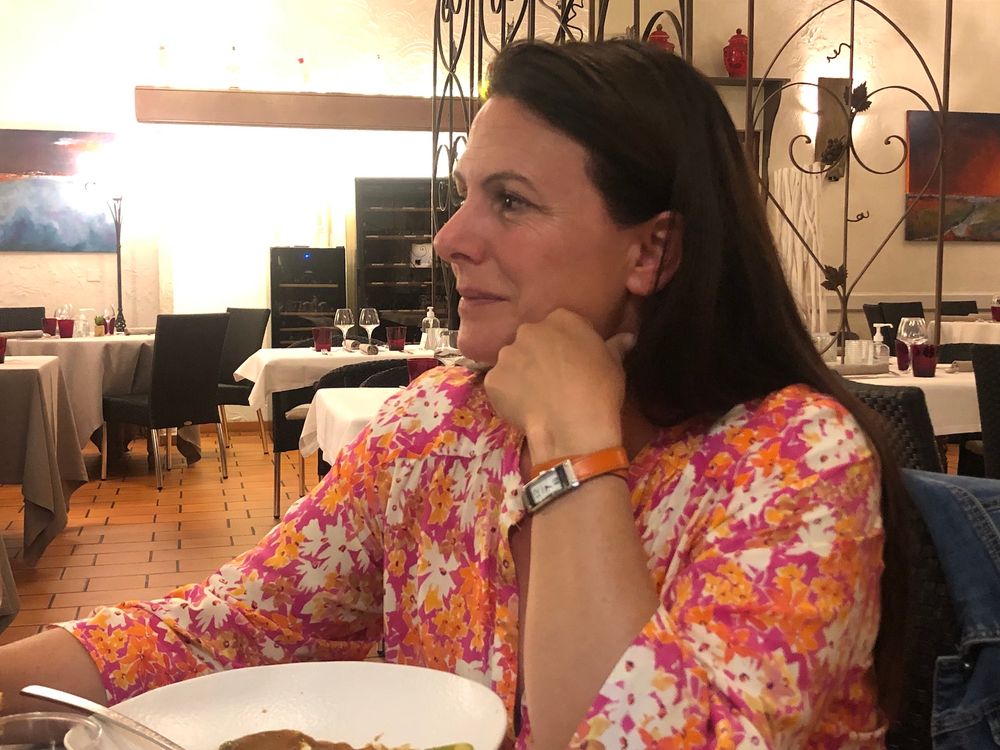
Séverine Bourrier
If I have one regret about the Roussillon trip, it is that we did not make a visit to Château de L’Ou. We met owner, Séverine Bourrier and tasted her wines over dinner and hearing her talk made me wish we were picnicking in her winery instead! Located a stone’s throw from Perpignan, the estate vineyards are located over four distinctive areas: Maury in the Agly Valley, Montescot in the Plaine du Roussillon, Caudiès-de-Fenouillèdes in the high Agly Valley where they also have vineyards in St Paul de Fenouillet. It’s an important point because terroir expression lies at the heart of Séverine’s philosophy.
The cellar sounds like a veritable treasure trove of fermentation and ageing barrels, with ongoing trials to see what plots and which varietals fare best in which. There’s everything from clay and stone terracotta to wooden barrels of all shapes and sizes… oh and eggs too, off course! Secret de Schistes Blanc 2020 is an amphora-vinified Grenache Gris (with a whisper of oak) that has a pea mousse, peach and stone fruit nose and a brilliantly taut palate. Pin-point balance! Compartir 2019 AOP Côtes du Roussillon Villages really impressed with smoky graphite notes, black fruit, blue flowers and liquorice. Again, the balance was à point and the finish took me straight back to the garrigue. (Hallgarten & Novum)
The Wines of Roussillon trade and press tasting will take place in London on June 13. There will be two masterclasses focusing on red and white AOPs from Roussillon. To register click here.
